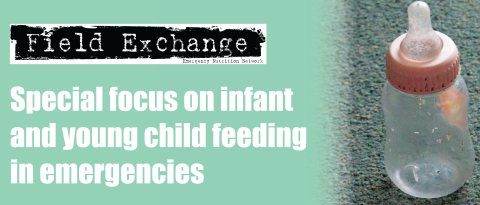Operational study on SAM management in high HIV prevalence area
Summary of published research1

Waiting for the ward round in the MOYO rehabilitation centre in Blantyre - Malawi's biggest feeding centre
In a hospital-based HIV prevalence study in Southern Malawi, 40% of the malnourished children tested HIV positive and HIV infection contributed to over 40% of all paediatric deaths. Nutrition Rehabilitation Unit (NRU) mortality was 28% and the inpatient case fatality rate for children with kwashiorkor was 30.5%. Difficulties in accessing food and medication supplies and in staff training and motivation were identified as factors undermining recovery.
In the same hospital, NRU research using peanut-based ready to use therapeutic food (RUTF) had demonstrated good weight gains and cure rates of 86% and 75% for HIV-negative and HIV-positive children respectively. However, these encouraging results were recorded in children recruited after stabilisation and did not address the ongoing high inpatient mortality.
The Malawi Ministry of Health and Population shared concerns about the continuing poor outcomes and agreed that a new treatment approach be evaluated. A study was therefore set up to assess the clinical outcomes, primarily recovery and case fatality rates, of a novel combined approach to treatment of severe acute malnutrition (SAM) using:
- an initial inpatient stabilisation phase, based on World Health Organisation (WHO) guidelines
- a subsequent outpatient recovery phase using a locally produced RUTF.
The study employed an operational prospective cohort study implemented in a referral hospital in southern Malawi between May 2003 and May 2004. Patient outcomes were compared with international standards and with audits carried out during the year preceding the study.
The study found that inpatient mortality was 18% compared to 29% the previous year. Programme recovery rate was 58.1% compared to 45% the previous year. The overall programme mortality rate was 25.7%. Of the total known HIV seropositive children, 49.5% died.
The outpatient treatment protocols used in this study differed from traditional community management of acute malnutrition (CMAM) protocols, in that treatment was centralised and all cases of SAM were initially admitted as inpatients. This placed high demands on families accessing care and may be a factor that contributed to delayed presentation (a total of 53.1% of inpatient deaths occurred within 4 days of admission, suggesting that children were very sick on admission). Allowing families to access care in their local clinic could reduce their opportunity costs, encourage earlier presentation and thereby reduce the proportion who present with medical complications. A pilot site that provided outpatient care from one rural clinic during this study was welcomed by carers and showed low default and high cure rates. A decentralised CMAM intervention in a high HIV prevalence area would need to ensure access to HIV and other diagnostic testing and clinical treatment facilities using welldefined referral criteria.
In conclusion, the inpatient mortality and cure rates improved compared to prestudy data but the overall mortality rate did not meet international standards. Additional interventions will be needed if these standards are to be achieved. This will require a combination of interventions including linkages to HIV support, testing and treatment services, decentralised outpatient treatment with RUTF for all children with uncomplicated SAM and provision of timely and specialised paediatric inpatient care for children with severe concurrent infections. The value of these additional interventions will need further assessment.
1Sadler. K et al (2008). Improving the management of severe acute malnutrition in an area of high HIV prevalence. Journal of Tropical Pediatrics Advance Access published May 1st 2008, pp 1-6
Imported from FEX website


